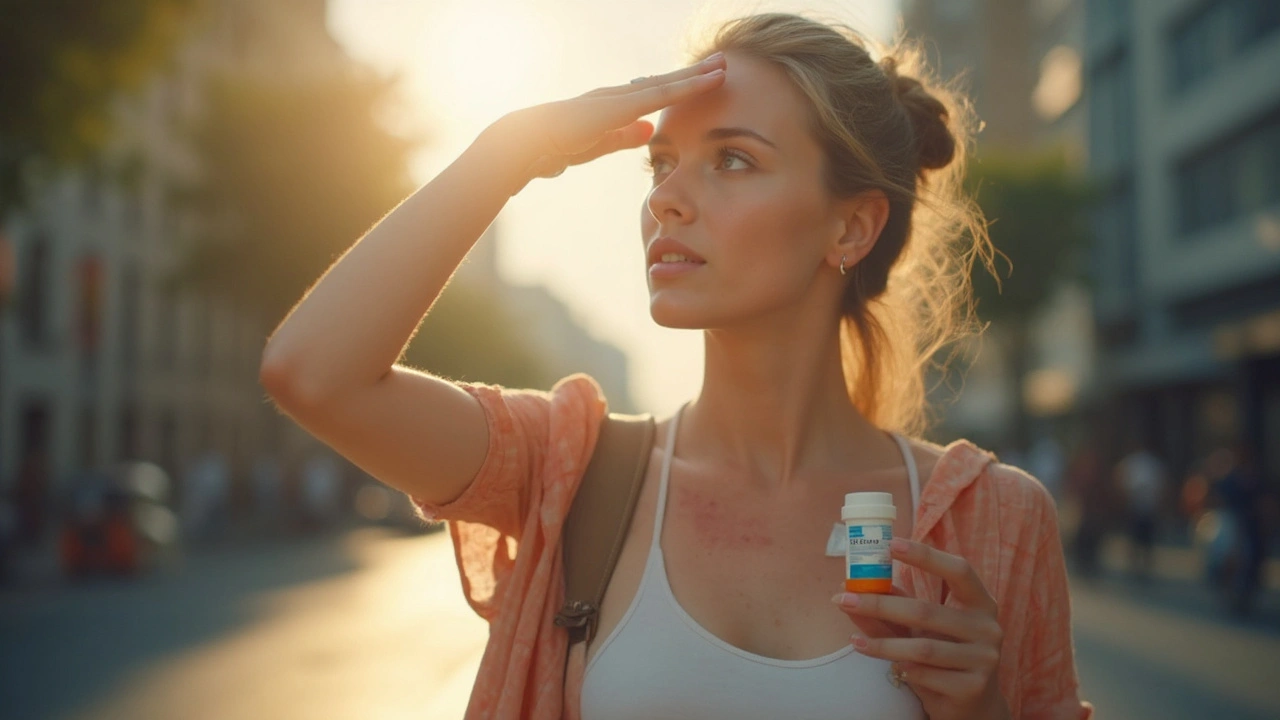Drug-Induced Photosensitivity – What You Need to Know
If you’ve ever gotten a rash or burn after being out in the sun while taking a new prescription, you might be dealing with drug‑induced photosensitivity. It’s not a rare reaction, but many people don’t recognize it until the skin gets angry. The good news? Knowing the signs and taking a few practical steps can keep you comfortable and protect your skin.
Common meds that can turn sunlight into a skin irritant
Several everyday drugs can make you extra sensitive to UV light. Antibiotics like tetracycline and doxycycline, often used for acne, are top offenders. Sulfonamide antibiotics, certain diuretics (think furosemide), and non‑steroidal anti‑inflammatory drugs (NSAIDs) such as ibuprofen can also cause problems. Even some antidepressants, antihistamines, and chemotherapy agents have been linked to photosensitivity.
Spot the symptoms before they get worse
Typical signs show up within hours to a few days after sun exposure. Look for red, itchy patches that feel like a mild sunburn but appear on areas that were covered or shaded. In some cases, blisters or a rash with a distinct border can develop. If you notice these changes and you’re on a new medication, stop assuming it’s just a regular sunburn and check the drug’s side‑effect list.
When you suspect a reaction, call your healthcare provider. They might adjust the dose, switch you to a different drug, or give you a short course of a steroid cream to calm the skin. Never keep taking a medication that repeatedly causes you to burn – your doctor can find a safer alternative.
While you wait for a professional opinion, protect yourself the easy way. Apply a broad‑spectrum sunscreen with at least SPF 30 every morning, and reapply every two hours if you’re outdoors. Choose sunscreen that blocks both UVA and UVB rays; many chemical sunscreens can cause irritation, so mineral options with zinc oxide or titanium dioxide work well for sensitive skin.
Clothing is another simple shield. Long sleeves, wide‑brimmed hats, and UV‑protective fabrics keep most of the UV rays off your skin. If you need to be outside during peak hours (10 a.m. to 4 p.m.), try to stay in the shade or limit exposure to short periods.
Hydration and skin moisturizers also help. Drink plenty of water to keep your skin barrier strong, and use a fragrance‑free moisturizer after showering to restore the skin’s natural oils. If you notice lingering redness or swelling, a cool compress can soothe the area without worsening the reaction.
Many readers find it useful to track medication changes alongside sun exposure. A quick note in your phone about when you started a new drug and any skin changes can give your doctor a clear picture, speeding up the diagnosis.
Drug‑induced photosensitivity isn’t a reason to avoid all sunlight. Sunlight gives us vitamin D and lifts mood, but a little planning goes a long way. By knowing which meds can cause trouble, spotting early symptoms, and taking practical sun‑safe steps, you can stay comfortable and keep enjoying the outdoors safely.

